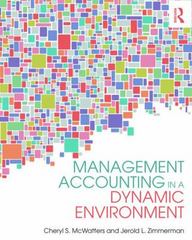The following figures were taken from the records of Wellington Co. for the year 2016. At the
Question:
The following figures were taken from the records of Wellington Co. for the year 2016.
At the end of the year, two jobs were still in process. Details about the two jobs are given as follows:

Wellington Co. applies overhead at a budgeted rate, calculated at the beginning of the year. The budgeted rate is the ratio of budgeted overhead to budgeted direct labor costs.
Budgeted figures for 2016 were as follows:

There were no opening inventories. It is company practice to prorate any over- or under-absorbed overhead to Finished Goods Inventory, Work-in-Process, and Cost of Goods Sold based on the total dollars in these accounts.
a. Compute the cost of work-in-process before prorating over- or under-absorbed overhead.
b. Prepare a schedule of Finished Goods Inventory, Work-in-Process, and Cost of Goods Sold after prorating over- or under-absorbed overhead.
c. What is the difference in the operating profit if the over- or under-absorbed overhead is charged to Cost of Goods Sold, instead of being prorated to Finished Goods Inventory, Work-in-Process, and Cost of Goods Sold?
d. The manager’s compensation is partially based on net profit. What is the effect on the manager’s compensation if the over- or under-absorbed overhead is charged to Cost of Goods Sold instead of prorated? What managerial incentives could this system create if the manager were allowed to influence the application rate and/or the year-end adjustment of any over- or under-absorbed overhead?
Step by Step Answer:

Management Accounting In A Dynamic Environment
ISBN: 9780415839020
1st Edition
Authors: Cheryl S McWatters, Jerold L Zimmerman





